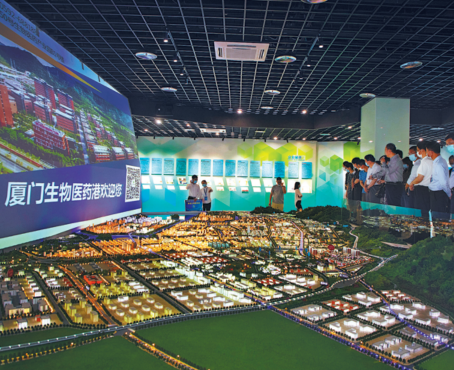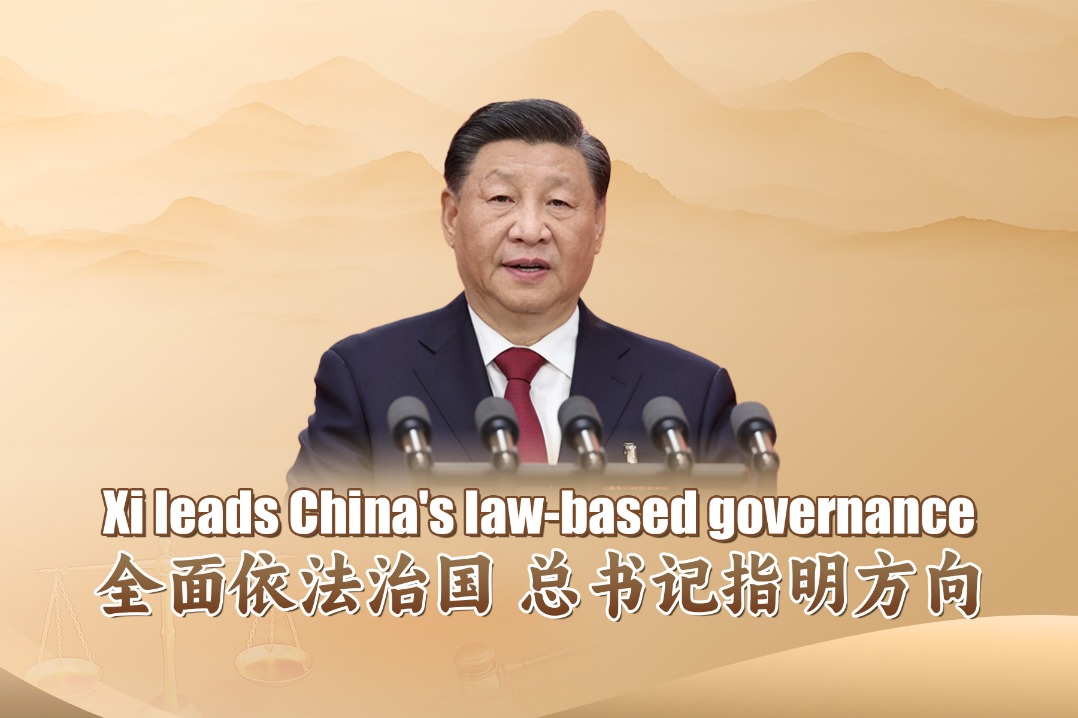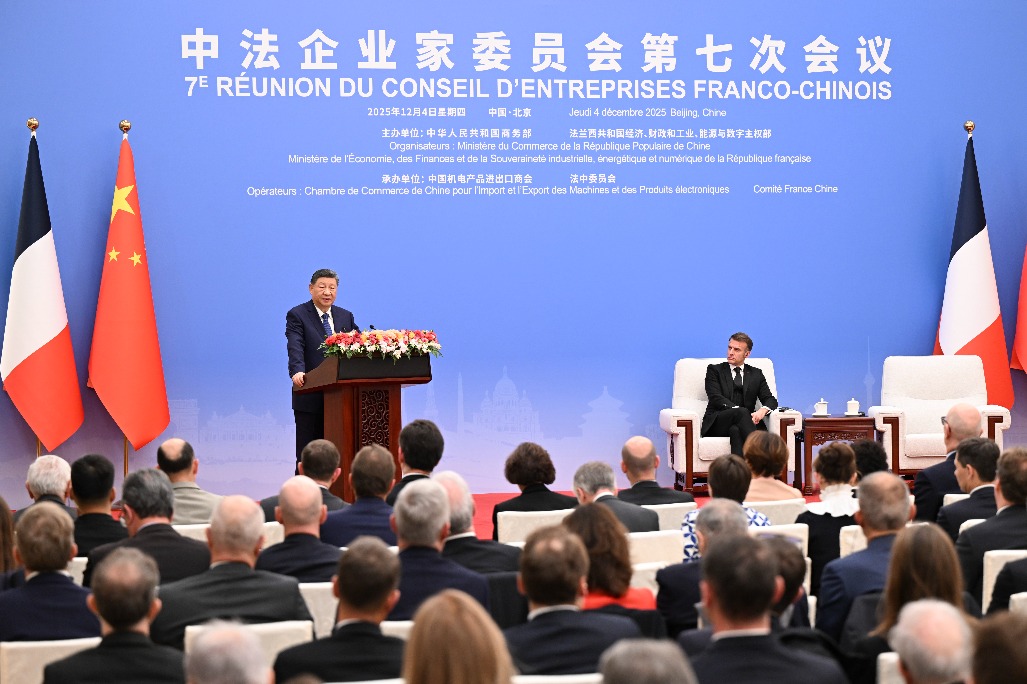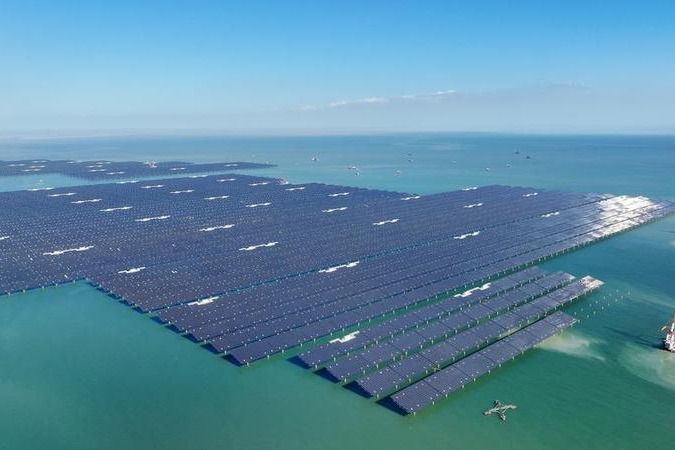Haicang's efforts in innovative drug R&D bear fruit

Having recently secured market approval for three locally developed innovative drugs, Haicang district in Xiamen, Fujian province, is making waves on China's pharmaceutical map.
With each drug targeting a key therapeutic area including women's health, oncology and pediatric growth, the breakthroughs are expected to fill significant technology gaps in the domestic market.
Leading the charge is Cecolin 9, the country's first homegrown nine-valent human papillomavirus (HPV) vaccine, jointly developed by Xiamen University and Wantai Bio-Pharm.
The innovative vaccine provides broad-spectrum protection against seven high-risk HPV types responsible for cervical cancer, while also preventing a range of external genital lesions caused by two low-risk HPV types.
The milestone shatters the longstanding monopoly on high-valency HPV vaccines held by imported brands, officially making China the second nation after the United States with independent supply capabilities for this critical vaccine category.
Adding to the momentum is Pegpesen, an all-new, long-acting growth hormone injection independently developed by Xiamen-based biopharmaceutical company Amoytop Biotech.
Designed to treat growth hormone deficiency in children aged three and above, the drug pioneers a globally unique Y-shaped 40kD polyethylene glycol modification technology, allowing for a once-a-week injection schedule. According to the pharmaceutical firm, compared with traditional short-acting therapies that require daily administration, the innovation can reduce annual injections by 313 times.
Meanwhile, Fosrolapitant and Palonosetron Hydrochloride for Injection, developed by Fujian Shengdi Pharmaceutical, is China's first ultra-long-acting, original compound antiemetic injection. Its standout feature lies in dual receptor antagonism — targeting both NK-1 and 5-HT3 receptors to suppress vomiting reflexes via two distinct pathways.
According to Fujian Shengdi, compared to traditional antiemetics that demand daily doses, its single injection per chemotherapy cycle can prevent nausea and vomiting, vastly improving patient adherence and offering much-needed relief for cancer patients enduring long-term chemotherapy.
Developed at Haicang's biopharmaceutical port, the three groundbreaking drugs' rapid market approval consolidates Xiamen's position in China's pharmaceutical landscape as a "super incubator" for domestic drug innovation.
As the core biopharmaceutical zone in Fujian, Haicang has built a full-chain innovation ecosystem in recent years — integrating sectors including R&D, clinical trials, regulatory approvals, application promotion and industrial deployment.
For example, the recent release of Xiamen's comprehensive measures to support high-quality biopharmaceutical development has fortified this system further, establishing a synchronized, all-level policy framework that supports every stage and cycle of innovative drug development.
The gist of the new policy is that it strengthens interdepartmental coordination, connecting all stages from biopharmaceutical R&D innovation and clinical trials to testing, evaluation, approval, and hospital application, Zhuang Ruzhen, director of the social science and technology division at Xiamen's municipal bureau of science and technology, was quoted by local media Xiamen Daily as saying.
Local authorities have also pushed for the provincial drug regulator to set up an on-site service center in the biopharmaceutical port. It has to date streamlined the approval process for over 4,170 drugs, medical devices and health product licenses, significantly accelerating time-to-market and enhancing efficiency for local drug makers, data from the provincial medical products administration showed.
Haicang is also promoting synergy between academia and industry, ensuring seamless transition from laboratory breakthroughs to industrial production.
The district's official data showed that in 2024, Haicang's high-tech biopharmaceutical firms devoted 9.28 percent of operating revenue to R&D. Of this, investment in innovative drug R&D reached an impressive 20.37 percent.
The region's industrial clustering effect is also taking shape. Today, over 55 new drug candidates from Haicang are either in clinical trials or awaiting approval, accounting for 86 percent of the city's entire pipeline. Last year, the district saw 116 new Class III medical device approvals, a year-on-year jump of 73.13 percent, highlighting the district's accelerating pace of innovation and industrial transformation.
From chasing global players to setting the pace, Xiamen's biopharmaceutical sector has crossed the 100 billion yuan ($13.9 billion) revenue mark for three consecutive years and is now sprinting toward its 150 billion yuan target, according to local government data.

Today's Top News
- Tokyo urged to specify its past commitments
- Cooperation conducive to steadying progress in China-France partnership: China Daily editorial
- Shenzhou XXI crew set for first extravehicular activities
- Xi, Macron attend China-France Business Council meeting
- China expected to prioritize boosting consumption and domestic demand in 2026, expert says
- Xi, Macron jointly meet press






























